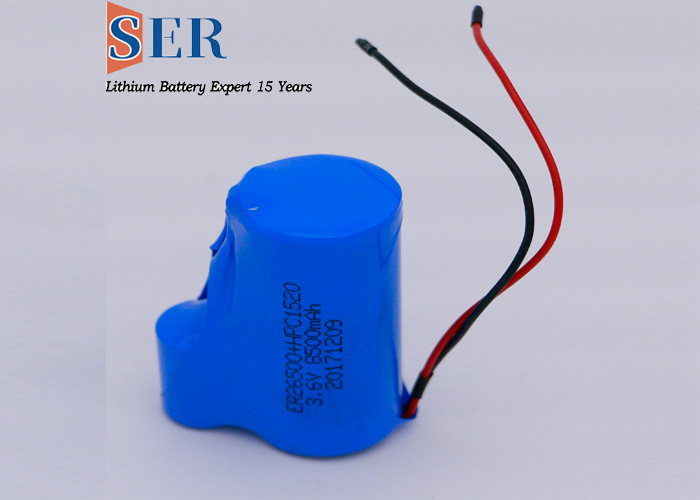The Integration of Li-SOCl₂ Battery and Supercapacitor for High Pulse Current Applications
The Integration of Li-SOCl₂ Battery and Supercapacitor for High Pulse Current Applications
In the realm of modern electronics, the demand for efficient and reliable power sources that can handle high pulse currents has become increasingly crucial. High pulse current applications, such as wireless sensors, smart meters, and other IoT devices, require a power source that can provide instantaneous bursts of energy without suffering from significant voltage drops. This is where the combination of Li-SOCl₂ battery and supercapacitor comes into play, offering an innovative solution that leverages the strengths of both technologies.
I. Introduction to Li-SOCl₂ Battery
Lithium thionyl chloride (Li-SOCl₂) batteries are a class of primary batteries that are renowned for their high energy density, long shelf life, and high operating voltage. These batteries employ lithium metal as the anode and thionyl chloride (SOCl₂) as the electrolyte and cathode reactant. The electrochemical reaction between lithium and thionyl chloride produces a stable voltage output, typically ranging from 3.6 to 3.9 volts, which is significantly higher than that of conventional alkaline batteries.
One of the key advantages of Li-SOCl₂ batteries is their high capacity, which allows them to store a large amount of energy per unit volume or weight. This is particularly useful for applications that require long-term, uninterrupted operation without the need for frequent battery replacements. Moreover, Li-SOCl₂ batteries have an excellent shelf life, retaining their charge for several years even under extreme conditions.
II. Introduction to Supercapacitor
Supercapacitors, also known as electrochemical double-layer capacitors (EDLCs) or ultracapacitors, are energy storage devices that bridge the gap between traditional capacitors and batteries. They offer much higher energy densities than capacitors and faster charge-discharge rates than batteries. The key to their performance lies in their unique structure, which consists of two electrodes separated by a porous separator and an electrolyte.
When a voltage is applied to a supercapacitor, a double-layer of charges is formed at the interface between the electrode and the electrolyte. This double-layer is responsible for storing energy, and its capacitance is significantly higher than that of conventional capacitors. As a result, supercapacitors can store and release energy much faster than batteries, making them ideal for applications that require high pulse currents.
III. The Advantages of Combining Li-SOCl₂ Battery and Supercapacitor
The integration of Li-SOCl₂ battery and supercapacitor offers a powerful combination that leverages the strengths of both technologies. The Li-SOCl₂ battery provides a high working voltage and capacity, ensuring that the system has sufficient energy reserves to meet the demands of high pulse current applications. Meanwhile, the supercapacitor provides a high power capability, allowing for instantaneous bursts of energy without causing severe voltage drops.
This combination is particularly useful in applications where a constant, stable voltage output is crucial. The Li-SOCl₂ battery ensures that the system maintains a stable voltage level, while the supercapacitor provides the necessary high pulse currents when required. This allows for efficient and reliable operation, even under demanding conditions.
IV. The Working Principle of the Combined System
In the combined system, the Li-SOCl₂ battery serves as the primary power source, providing a stable voltage output and long-term energy reserves. As the system operates, the Li-SOCl₂ battery gradually discharges, providing the necessary energy to power the device. However, when a high pulse current is required, such as during a sudden burst of activity or a transient event, the supercapacitor comes into play.
The supercapacitor is charged by the Li-SOCl₂ battery during periods of low current demand. This charging process occurs gradually, allowing the supercapacitor to accumulate a significant amount of energy over time. When a high pulse current is demanded, the supercapacitor discharges rapidly, providing the necessary burst of energy without causing a severe voltage drop in the system.
The combination of these two technologies allows for efficient energy management in high pulse current applications. The Li-SOCl₂ battery ensures that the system has sufficient energy reserves to meet long-term demands, while the supercapacitor provides instantaneous bursts of energy when required. This results in a more reliable and efficient system that can handle demanding conditions with ease.
V. Applications of the Combined System
The combined system of Li-SOCl₂ battery and supercapacitor finds applications in various fields that require high pulse current capabilities. One such application is in wireless sensors, where the system must operate continuously for long periods of time while also being able to transmit data in bursts.






